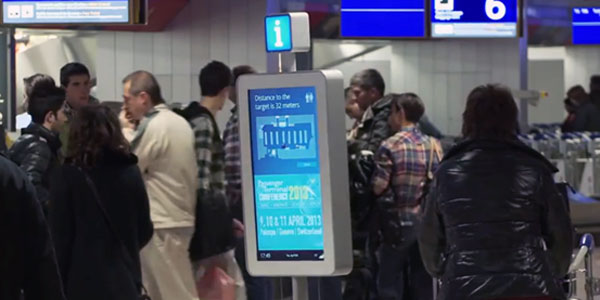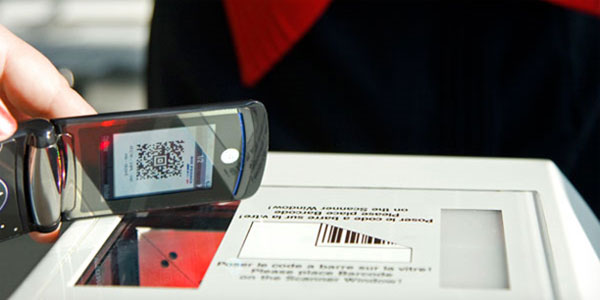Self-service and automation has become such a central element of the passenger experience that the possibility of human agents eventually being removed from the airport process altogether seems almost feasible. With the proliferation of online check-in, home-printed and permanent bag tags, self-service bag drop and mobile boarding passes, it is more valid than ever before to question whether human agents are needed at every touchpoint.
Automation is now being taken to the next level and rather than just allowing passengers to process themselves, some are exploring the viability of introducing robots. This is exactly what Geneva Airport has done this year. Along with BlueBotics, the airport implemented a robotic customer service agent in the baggage reclaim area to not just offer passengers directions to certain facilities, but to physically lead them there.

“This provided us with a starting point, a platform to test the robots,” explained Dr. Nicola Tomatis, CEO of BlueBotics. He explained that after much discussion, Geneva Airport opted to trial the robots in the baggage reclaim area as it is a point in the airport process where travellers are likely to have time to make use of them. “There’s a lot going on there,” he said. “There’s baggage collection, currency exchange, restrooms and facilities to buy tickets for trains, for example. A lot of passengers don’t use these services because they don’t know where they are.”
That’s where the robot comes in. Passengers could simply touch the screen, choose which facility they wanted to be directed to and the follow the robot, which would lead them there.
According to Tomatis, the robots proved to be such a success among passengers that Geneva Airport is now exploring where they can add the most value, before undertaking further trials.
Air France KLM’s automation focus

Geneva Airport isn’t alone in its willingness to test the viability of robots. Air France KLM is partnering with some of Europe’s leading universities on a three-year project to develop a robot that can assist in airside operations.
“This is a 50% scientific and 50% operational project,” explained Manuel van Lijf, Manager R&D and Innovation, Air France KLM. The project is still in the relatively early stages, but van Lijf plans to explain exactly how they could be used to benefit the passenger when he speaks at FTE Global 2013 this September.
Van Lijf explained that Air France KLM is also undertaking readability tests on home-printed and permanent bags to test whether either or both could be implemented to further empower the passenger. Automation is nothing new to the airline, which already offers automatic check-in and mobile boarding passes, and is also piloting self-boarding gates.
Robots vs humans
However, despite its position as one of the most forward-thinking airlines in terms of self-service, van Lijf explained that a completely automated process is not the aim for Air France KLM. “There is lots of stress in the airport environment and we need human agents to provide a level of comfort and service. We say that for around 80% of our passengers, the airport experience can be self-service. However, the processes that haven’t yet been automated are the most complex ones, so you do need customer service agents who are highly trained, knowledgeable and have the right tools to deliver the best customer service.”
As a pioneer in the field of robotics, one might assume that Tomatis would disagree with this assessment. That is not the case, though. “We have to remember that robots are designed to complement humans, not replace them,” he explained. “I would be unhappy having a completely automated experience as it can be complicated. Recently, I was at Munich Airport and my bag didn’t arrive after the flight. So, I spoke to a really helpful member of staff and after about an hour they found my bag. If I had to talk to a robot or a machine about this I would be highly unhappy. Machines are not always the solution.”
They are, however, looking like they will become an increasingly common part of the solution. Geneva Airport and Air France KLM may be among the industry’s robotics pioneers, but if they prove that robots can add true value to the passenger experience, it will only be a matter of time before others follow suit.
 As part of the ‘On the Ground’ conference stream at FTE Global 2013, which will be held in Las Vegas from 4-6 September, Manuel van Lijf, Manager R&D and Innovation, Air France KLM, will address delegates in a presentation entitled: ‘The long term view of Air France KLM on automating engagements with passengers’.
As part of the ‘On the Ground’ conference stream at FTE Global 2013, which will be held in Las Vegas from 4-6 September, Manuel van Lijf, Manager R&D and Innovation, Air France KLM, will address delegates in a presentation entitled: ‘The long term view of Air France KLM on automating engagements with passengers’. 




